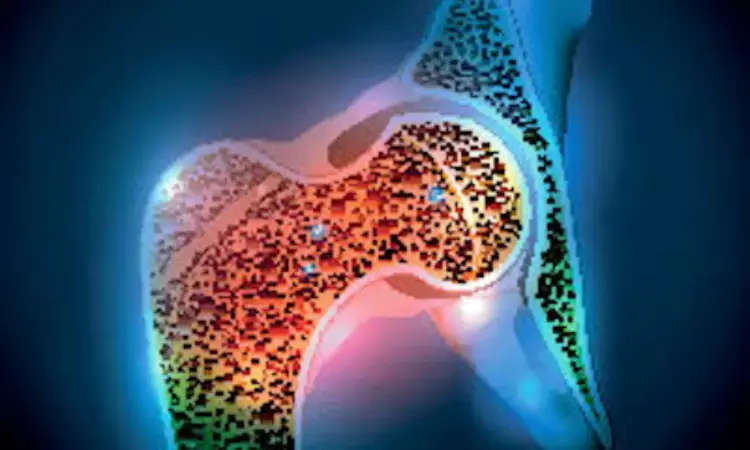- Home
- Medical news & Guidelines
- Anesthesiology
- Cardiology and CTVS
- Critical Care
- Dentistry
- Dermatology
- Diabetes and Endocrinology
- ENT
- Gastroenterology
- Medicine
- Nephrology
- Neurology
- Obstretics-Gynaecology
- Oncology
- Ophthalmology
- Orthopaedics
- Pediatrics-Neonatology
- Psychiatry
- Pulmonology
- Radiology
- Surgery
- Urology
- Laboratory Medicine
- Diet
- Nursing
- Paramedical
- Physiotherapy
- Health news
- Fact Check
- Bone Health Fact Check
- Brain Health Fact Check
- Cancer Related Fact Check
- Child Care Fact Check
- Dental and oral health fact check
- Diabetes and metabolic health fact check
- Diet and Nutrition Fact Check
- Eye and ENT Care Fact Check
- Fitness fact check
- Gut health fact check
- Heart health fact check
- Kidney health fact check
- Medical education fact check
- Men's health fact check
- Respiratory fact check
- Skin and hair care fact check
- Vaccine and Immunization fact check
- Women's health fact check
- AYUSH
- State News
- Andaman and Nicobar Islands
- Andhra Pradesh
- Arunachal Pradesh
- Assam
- Bihar
- Chandigarh
- Chattisgarh
- Dadra and Nagar Haveli
- Daman and Diu
- Delhi
- Goa
- Gujarat
- Haryana
- Himachal Pradesh
- Jammu & Kashmir
- Jharkhand
- Karnataka
- Kerala
- Ladakh
- Lakshadweep
- Madhya Pradesh
- Maharashtra
- Manipur
- Meghalaya
- Mizoram
- Nagaland
- Odisha
- Puducherry
- Punjab
- Rajasthan
- Sikkim
- Tamil Nadu
- Telangana
- Tripura
- Uttar Pradesh
- Uttrakhand
- West Bengal
- Medical Education
- Industry
MRI useful for the assessment of bone health in postmenopausal women: Study

USA: In postmenopausal women, MRI-identified bone markers such as density, mineralization, morphologic structure, and porosity are important parameters for evaluating bone health, findings from a single-centre study shows. The results were published in the journal Radiology on Jan 24 2023.
Osteoporosis is a health issue linked with 2 million annual fractures and more fracture-related costs. The clinical standard of osteoporosis fracture risk prediction is BMD (bone mineral density), assessed typically with DXA (dual-energy x-ray absorptiometry) in the hip and lumbar vertebrae. A prospective study of 7000 participants revealed that cortical bone measures of porosity and area could predict fracture independent of sex, age, weight, height, and BMD.
Preclinical studies have indicated that solid-state MRI markers of morphologic structure, cortical bone porosity, osteoid density, and mineralization are critical measures of bone health. Considering this, Brandon C. Jones and colleagues aimed to explore whether MRI markers of cortical bone porosity, mineralization, morphologic structure, and osteoid density are affected in postmenopausal osteoporosis and to determine associations between MRI markers and BMD in postmenopausal women in a single-centre study.
For this purpose, the researchers prospectively recruited postmenopausal women from 2019 to 2020 in two groups: participants with osteoporosis who had not undergone treatment, defined as having DXA T-score of −2.5 or less and control participants without osteoporosis (non-OP). Participants underwent MRI in the midtibia, DXA in the spine and hip, and peripheral quantitative CT in the midtibia. Notably, they quantified tMRI measures of osteoid density (bound water), cortical bone porosity (total water and pore water), mineralization (phosphorus density (31P) and concentration ratio of 31P-to-BW) morphologic structure (cortical bone thickness), and morphologic structure (cortical bone thickness) at 3.0 T. A comparison was made between MRI measures of OP and non-OP groups and correlations with bone mineral density were examined.
The study led to the following findings:
· Fifteen participants with OP (mean age, 63 years) and 19 without OP (mean age, 65 years) were evaluated.
· The OP group had elevated pore water (11.6 mol/L vs 9.5 mol/L) and total water densities (21.2 mol/L vs 19.7 mol/L) and had lower cortical bone thickness (4.8 mm vs 5.6 mm) and 31P density (6.4 mol/L vs 7.5 mol/L) than the non-OP group, respectively. However, there was no evidence of a difference in BW or 31P-to-BW concentration ratio.
· Pore and total water densities were inversely associated with DXA and peripheral quantitative CT BMD. In contrast, cortical bone thickness and 31P density were positively associated with DXA and peripheral quantitative CT BMD.
· BW, 31P density, and 31P-to-BW concentration ratio were positively associated with DXA but not with peripheral quantitative CT.
"Solid-state MRI of cortical bone can detect potential impairments in parameters reflecting mineralization, morphologic structure, and porosity in postmenopausal osteoporosis," the researchers wrote. "Future studies should investigate these markers in larger groups to find out if they can detect changes in bone health following pharmacologic treatment."
Reference:
Jones BC, Lee H, Cheng CC, Al Mukaddam M, Song HK, Snyder PJ, Kamona N, Rajapakse CS, Wehrli FW. MRI Quantification of Cortical Bone Porosity, Mineralization, and Morphologic Structure in Postmenopausal Osteoporosis. Radiology. 2023 Jan 24:221810. doi: 10.1148/radiol.221810. Epub ahead of print. PMID: 36692396.
Dr Kamal Kant Kohli-MBBS, DTCD- a chest specialist with more than 30 years of practice and a flair for writing clinical articles, Dr Kamal Kant Kohli joined Medical Dialogues as a Chief Editor of Medical News. Besides writing articles, as an editor, he proofreads and verifies all the medical content published on Medical Dialogues including those coming from journals, studies,medical conferences,guidelines etc. Email: drkohli@medicaldialogues.in. Contact no. 011-43720751


